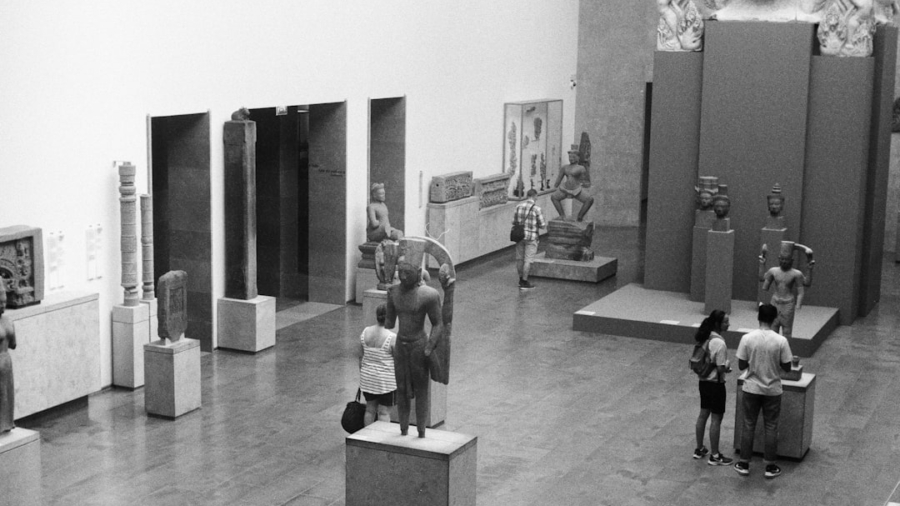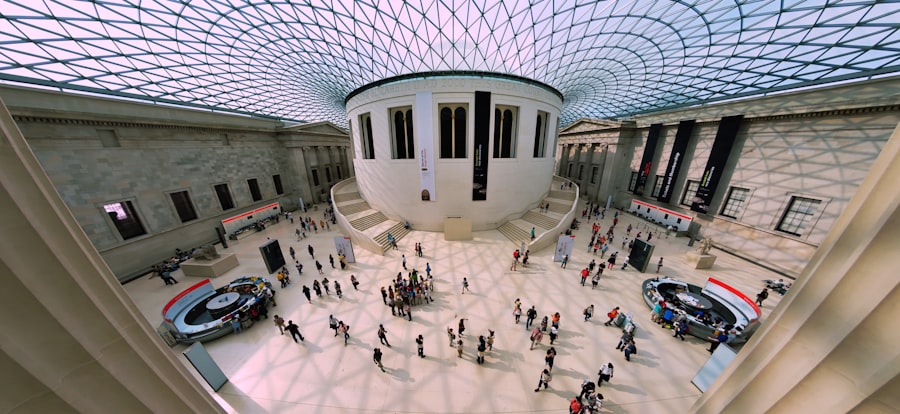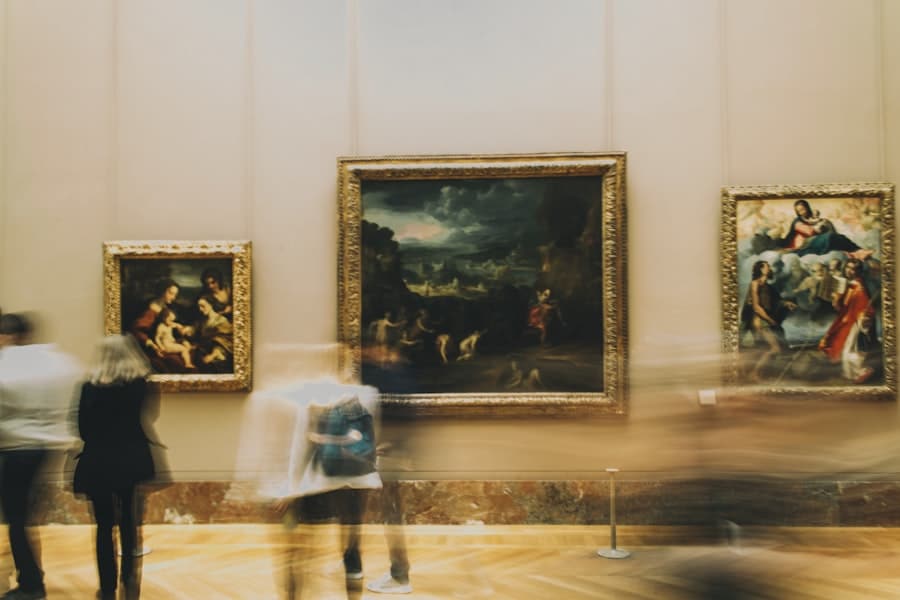The advent of Augmented Reality (AR) and Virtual Reality (VR) technologies has marked a significant transformation in the educational landscape. These immersive technologies have moved beyond their initial applications in gaming and entertainment, finding a robust foothold in classrooms and learning environments. The integration of AR and VR into education is not merely a trend; it represents a paradigm shift in how knowledge is imparted and absorbed.
By providing interactive and engaging experiences, these technologies cater to diverse learning styles, making education more accessible and effective. One of the most compelling aspects of AR and VR in education is their ability to create experiential learning opportunities. Traditional educational methods often rely on passive learning, where students absorb information through lectures or textbooks.
In contrast, AR and VR facilitate active participation, allowing learners to engage with content in a three-dimensional space. For instance, students can explore the human anatomy by virtually dissecting a 3D model or travel back in time to witness historical events firsthand. This level of engagement not only enhances retention but also fosters critical thinking and problem-solving skills, as students navigate complex scenarios in a controlled environment.
Key Takeaways
- AR and VR are becoming increasingly popular in education, offering immersive and interactive learning experiences.
- Gamification has a significant impact on learning, making education more engaging and enjoyable for students.
- AR and VR bring history and culture to life, allowing students to explore and experience the past in a new and interactive way.
- Immersive experiences play a crucial role in education, enhancing student engagement and understanding of historical and cultural topics.
- Successful case studies demonstrate the effective implementation of AR and VR in historical and cultural learning, showcasing the potential of these technologies in education.
Gamification and its Impact on Learning
Gamification, the application of game-design elements in non-game contexts, has emerged as a powerful tool in education, particularly when combined with AR and VR technologies. By incorporating elements such as points, badges, leaderboards, and challenges into the learning process, educators can motivate students to engage more deeply with the material. This approach taps into the natural human inclination towards competition and achievement, transforming mundane tasks into exciting challenges that encourage participation.
The impact of gamification on learning outcomes is profound. Research has shown that when students are presented with gamified learning experiences, they are more likely to retain information and develop a positive attitude towards learning. For example, platforms like Kahoot!
and Quizizz have successfully integrated gamification into quizzes and assessments, making them more interactive and enjoyable. When AR and VR are layered onto these gamified experiences, the potential for engagement multiplies. Imagine a history lesson where students earn points for completing missions that involve solving puzzles related to ancient civilizations while exploring a virtual world that replicates those environments.
Bringing History and Culture to Life with AR and VR
AR and VR technologies have the unique ability to transport learners to different times and places, effectively bringing history and culture to life in ways that traditional methods cannot achieve. Through immersive experiences, students can walk through ancient ruins, interact with historical figures, or participate in cultural rituals without ever leaving their classrooms. This not only enriches their understanding of historical contexts but also fosters empathy and appreciation for diverse cultures.
For instance, platforms like Google Arts & Culture offer virtual tours of world-renowned museums and historical sites, allowing students to explore artifacts and artworks from various cultures. Similarly, applications like TimeLooper enable users to experience historical events through VR simulations, such as witnessing the signing of the Declaration of Independence or standing on the battlefield during pivotal moments in history. These experiences provide a visceral connection to the past, making history more relatable and engaging for students who might otherwise struggle with abstract concepts.
The Role of Immersive Experiences in Education
Immersive experiences play a crucial role in enhancing educational outcomes by creating environments where learners can explore, experiment, and engage with content in meaningful ways. The sensory engagement provided by AR and VR technologies stimulates cognitive processes that are essential for effective learning. When students are fully immersed in an experience, they are more likely to remember what they have learned and apply it in real-world situations.
Moreover, immersive experiences can cater to various learning preferences. Visual learners benefit from the vivid imagery of AR and VR environments, while kinesthetic learners thrive on the hands-on interaction these technologies provide. For example, a science class might use VR simulations to allow students to conduct virtual experiments that would be too dangerous or impractical in a traditional lab setting.
This adaptability makes AR and VR invaluable tools for educators seeking to create inclusive learning environments that accommodate all students.
Case Studies: Successful Implementation of AR and VR in Historical and Cultural Learning
Several educational institutions have successfully implemented AR and VR technologies to enhance historical and cultural learning experiences. One notable example is the use of VR at Stanford University’s Virtual Human Interaction Lab, where students can engage with historical simulations that allow them to experience events from multiple perspectives. This approach not only deepens their understanding of historical narratives but also encourages critical thinking about the complexities of history.
Another compelling case study is the use of AR in museums, such as the Smithsonian Institution’s National Museum of Natural History. The museum has developed an AR app that allows visitors to interact with exhibits through their smartphones or tablets. By pointing their devices at specific artifacts, users can access additional information, animations, and even 3D reconstructions of ancient environments.
This interactive experience enhances visitor engagement and provides a richer understanding of cultural heritage.
Overcoming Challenges in Integrating AR and VR into Educational Settings
Despite the promising potential of AR and VR technologies in education, several challenges must be addressed for successful integration into educational settings. One significant barrier is the cost associated with acquiring the necessary hardware and software. Many schools may lack the budget to invest in high-quality VR headsets or AR-enabled devices, limiting access for both educators and students.
Additionally, there is often a steep learning curve associated with implementing these technologies effectively. Educators may require training to understand how to design lessons that leverage AR and VR effectively while aligning with curriculum standards. Furthermore, concerns about accessibility must be considered; not all students may have equal access to technology at home or even within school settings.
Addressing these challenges requires collaboration between educators, technology developers, and policymakers to create equitable solutions that ensure all students can benefit from immersive learning experiences.
The Future of AR and VR in Historical and Cultural Education
The future of AR and VR in historical and cultural education appears promising as advancements in technology continue to evolve. As hardware becomes more affordable and accessible, it is likely that more educational institutions will adopt these immersive tools as part of their teaching strategies. Innovations such as haptic feedback devices could further enhance the realism of virtual experiences, allowing students to not only see but also feel their interactions within virtual environments.
Imagine classrooms around the world participating in a virtual exchange program where they can explore each other’s cultures through immersive simulations. This global perspective would not only enrich students’ understanding of history but also foster cross-cultural communication skills essential for navigating an increasingly interconnected world.
Tips for Educators and Developers to Create Effective AR and VR Learning Experiences
To create effective AR and VR learning experiences, educators and developers should prioritize several key strategies. First, it is essential to align content with educational standards while ensuring that it remains engaging for students. This involves collaborating with subject matter experts to develop accurate representations of historical events or cultural practices within immersive environments.
Second, user experience should be at the forefront of design considerations. Intuitive interfaces that allow for easy navigation will enhance student engagement and reduce frustration during learning activities. Additionally, incorporating feedback mechanisms can help educators assess student understanding and adjust instruction accordingly.
By working together, they can ensure that AR and VR experiences are not only innovative but also pedagogically sound, ultimately leading to improved educational outcomes in historical and cultural education contexts.




